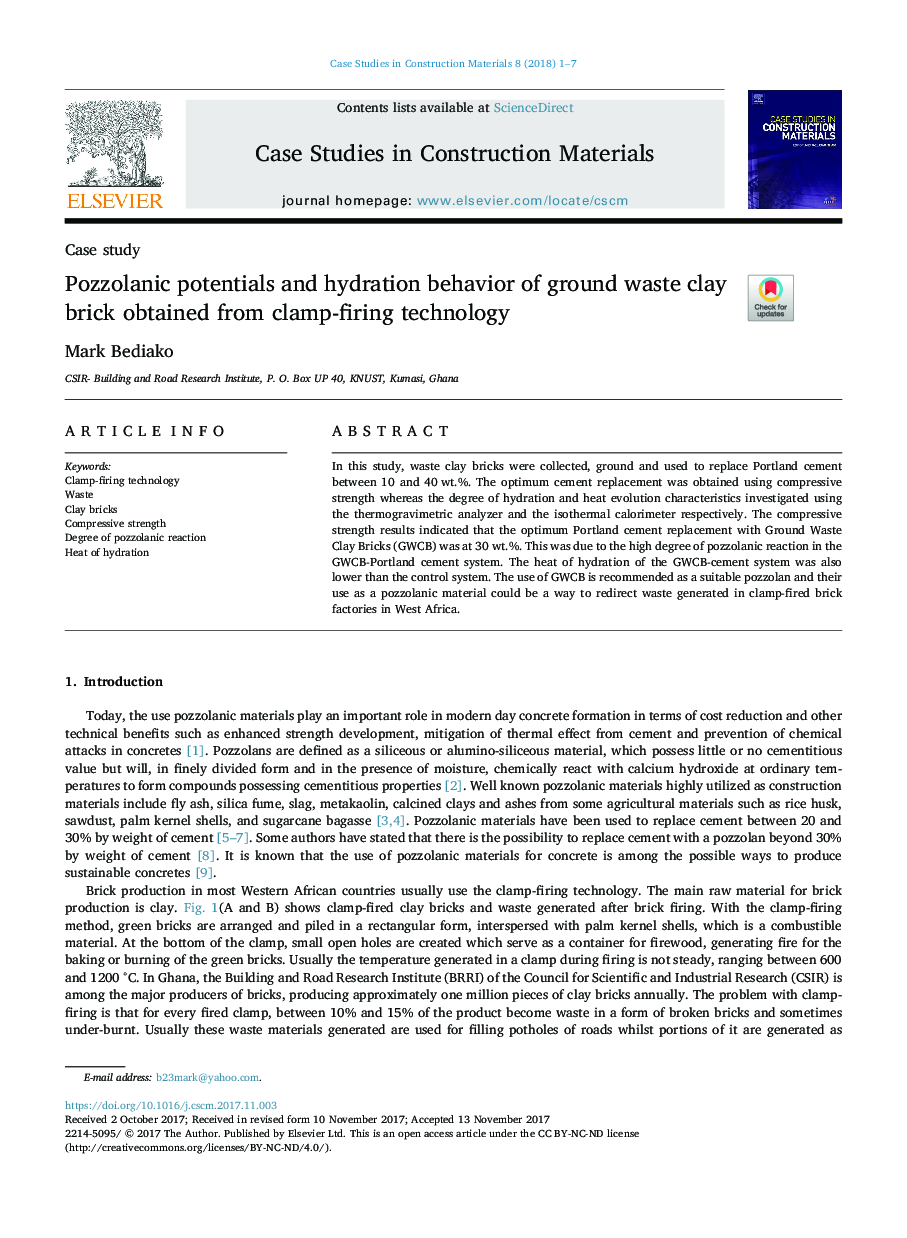| Article ID | Journal | Published Year | Pages | File Type |
|---|---|---|---|---|
| 6701719 | Case Studies in Construction Materials | 2018 | 7 Pages |
Abstract
In this study, waste clay bricks were collected, ground and used to replace Portland cement between 10 and 40Â wt.%. The optimum cement replacement was obtained using compressive strength whereas the degree of hydration and heat evolution characteristics investigated using the thermogravimetric analyzer and the isothermal calorimeter respectively. The compressive strength results indicated that the optimum Portland cement replacement with Ground Waste Clay Bricks (GWCB) was at 30Â wt.%. This was due to the high degree of pozzolanic reaction in the GWCB-Portland cement system. The heat of hydration of the GWCB-cement system was also lower than the control system. The use of GWCB is recommended as a suitable pozzolan and their use as a pozzolanic material could be a way to redirect waste generated in clamp-fired brick factories in West Africa.
Related Topics
Physical Sciences and Engineering
Engineering
Civil and Structural Engineering
Authors
Mark Bediako,
